
The Alexandrinsky Theatre is the oldest national theatre in Russia, and the first professional state Russian drama theatre, which today is among the monuments and attractions of St. Petersburg.
The full official name of the theater: The National Drama Theater of Russia (Alexandrinsky Theater).
Colloquially, the theater is called "Alexandrinka".
The Alexandrinsky Theater is located in the center of St. Petersburg, on Ostrovsky Square, near Nevsky Prospekt - one of the most visited and beautiful streets of the city.
The theater was formed by decree of the Empress Elizabeth Petrovna (daughter of Peter the Great) to present tragedies and comedies. The Senate Decree was signed on August 30, 1756, the day of St. Alexander Nevsky.
The theater became the first state public theater in Russia and began its regular performances in the former Golovkin House on Vasilievsky Island. Subsequently, a separate building was built for the theater.
In 1832, the theater received a magnificent building on Nevsky Prospekt - in the heart of St. Petersburg. The building was designed by the great architect Karl Rossi. The theater was named after the wife of Emperor Nicholas I - Alexandra Feodorovna - "Alexandrinsky Theater".
Since then, the building belongs to the theater and is considered a masterpiece of world theater architecture.

Before the revolution of 1917, the theater was the main imperial theater and was under the personal patronage of the Russian monarchs. In the Soviet years, the theater had the status of an academic theater.
During the history of the Alexandrinsky Theater, the premieres of almost all works of Russian drama classics, including: "The Inspector" by N. V. Gogol, the play "The Storm" by A. N. Ostrovsky, the tragedy of A. K. Tolstoy "The Death of John the Terrible", the tragedy of A. S. Pushkin "Boris Godunov", etc.
Currently, the Alexandrinsky Theater is recognized as a National Treasure, is among the pearls of world architecture, which are registered by UNESCO. This is a unique complex of buildings, with a five-tiered auditorium, a large stage, palace grand foyers and stairs, as well as a majestic facade, which has become one of the emblems of the Northern Capital of Russia.
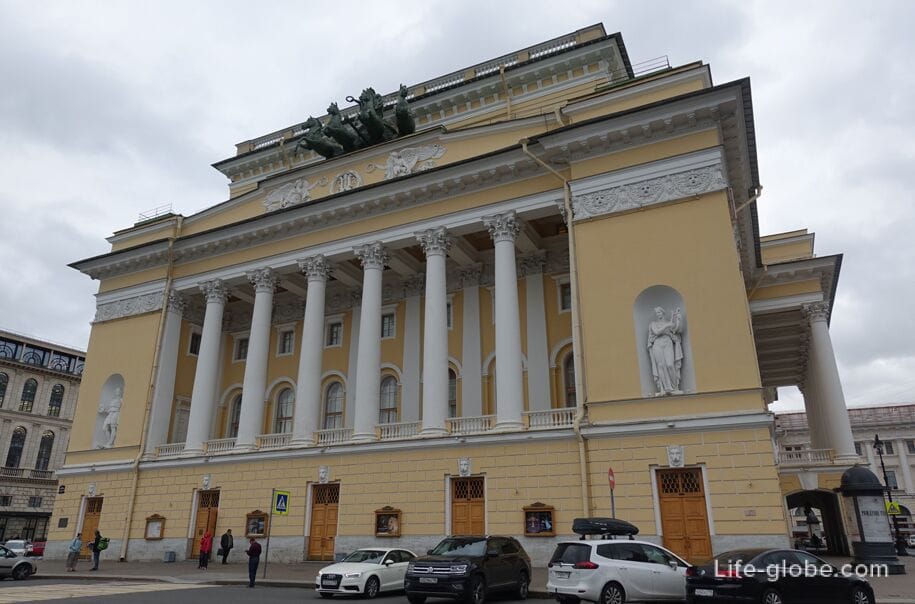
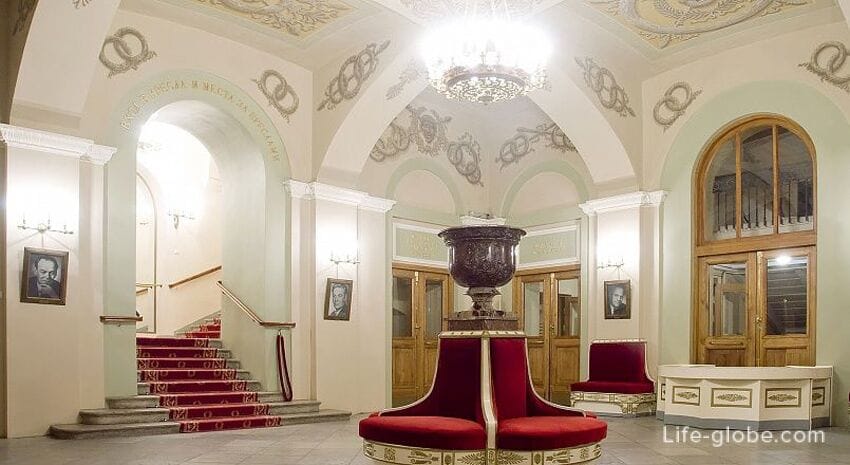
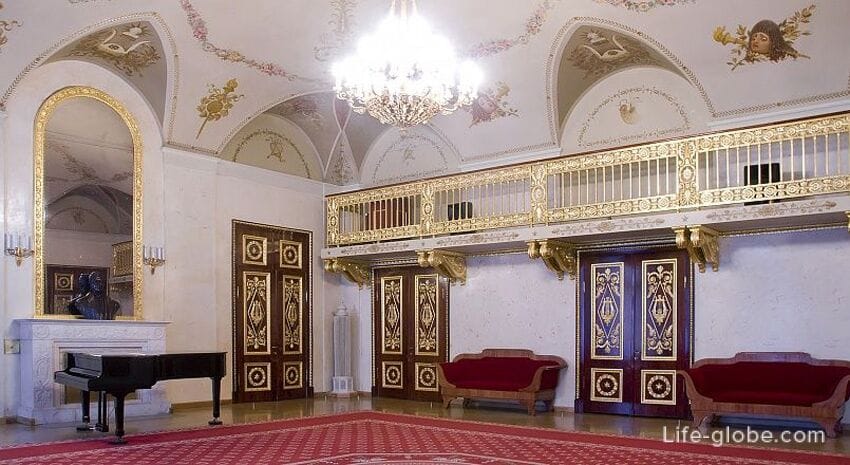
The main facade of the Alexandrinsky Theater faces the Catherine Garden, the center of which is decorated with a monument to Catherine II. Learn more about the garden and the monument...
View of the theater from the Catherine Garden
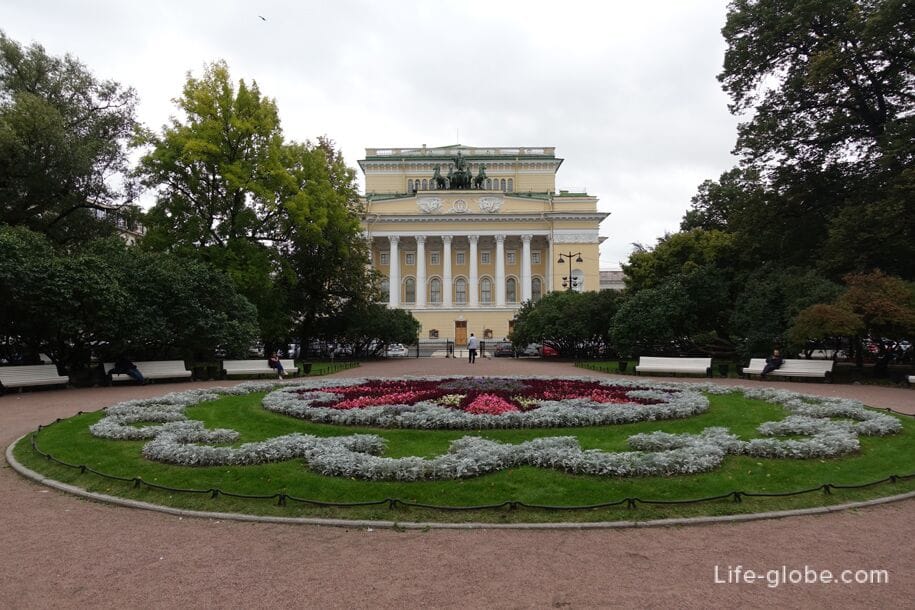
The Alexandrinsky Theater has two stages: the main one and the new one.

The Alexandrinsky Theater has unique collections of sets, costumes, furniture, theatrical props and weapons.
In the space of the third tier of the theater is the "Museum of Russian Drama", whose exhibitions are dedicated to the history of the oldest drama troupe in Russia.
In the eight halls of the theater museum (Boyarsky, Gogol, Golovinsky, Imperial, Soviet, Turgenevsky, the hall of the 18th century and the Theater Travel), stage costumes, furniture and props are presented, created according to the sketches of outstanding artists, including Golovin, Bilibin, Altman and others.
InThe Boyar Hall contains sketches of scenery, costumes, props and props, as well as the costumes themselves for such famous performances as "Boris Godunov" by A. S. Pushkin, "The Great Sovereign" by V. Solovyov and "Tsar Fyodor Ioannovich" by A. K. Tolstoy.
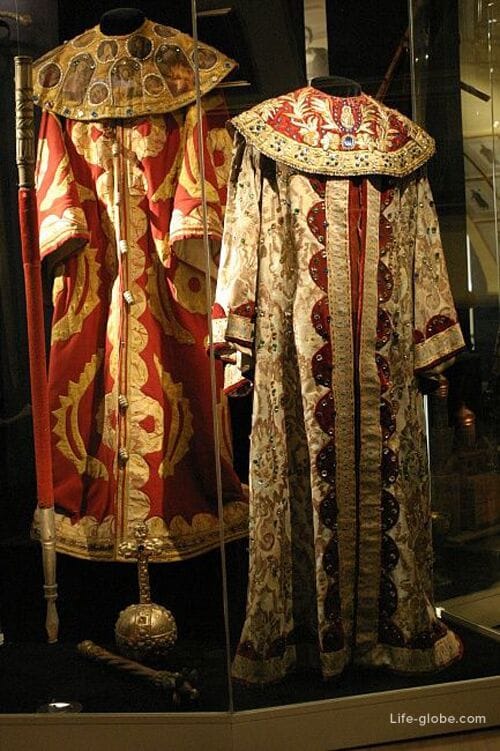
InIn the Gogol Hall, an attempt was made to recreate the stage world of N. V. Gogol.
In the hall, among other things, there are photos from various productions of the "Inspector General".
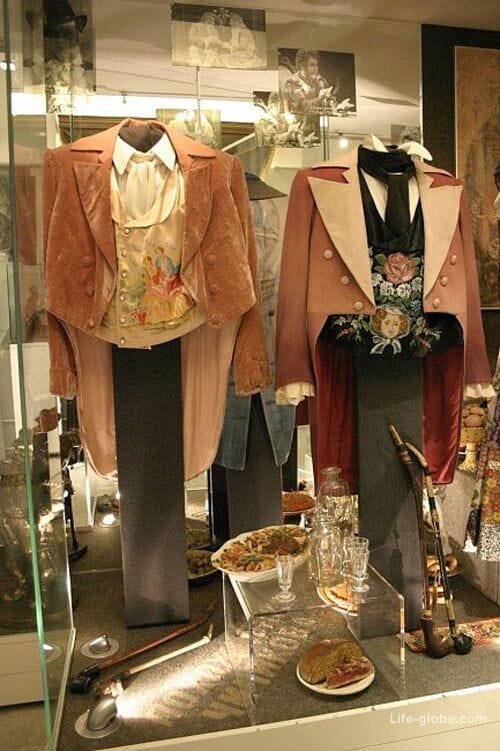
InThe Golovinsky hall contains costumes, furniture and props created according to the sketches of the outstanding artist of the" Silver Age " A. Ya. Golovin.
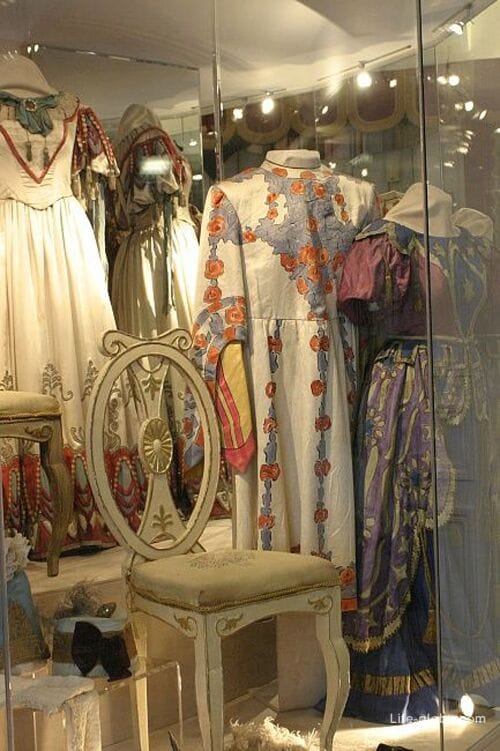
The hall of the 18th century is dedicated to performances, which in turn were dedicated to the events of the 18th century: the memory of Catherine the Great, the era of Peter the Great, the times of the Empress Anna Ioannovna, etc.
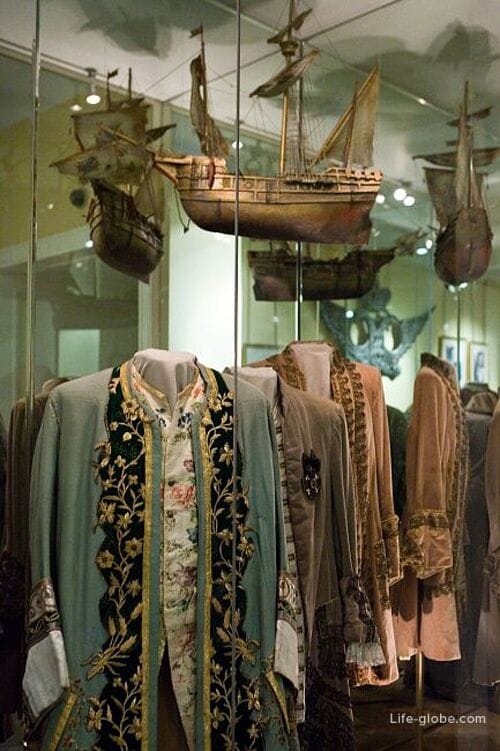
The Imperial Hall of the museum reproduces the furnishings of the imperial apartments in the Alexandrinsky Theater in the era of Nicholas I.
The color scheme of the hall's decoration is blue silk and gilded ornaments, which remind of the original decor of the theater, thought out by K. I. Rossi. On the wall of the hall there is a portrait of the wife of Nicholas I-Alexandra Feodorovna (Alexandrina) in whose honor the theater was named.

The Soviet Hall is dedicated to the Soviet era, which brought a new revolutionary theme to the stage of the Alexandrinsky Theater, when along with the classics, plays by Soviet authors appeared on the oldest stage in Russia.
The hall presents legendary productions - "Optimistic Tragedy" by Vs. Vishnevsky and "Running" by M. A. Bulgakov.
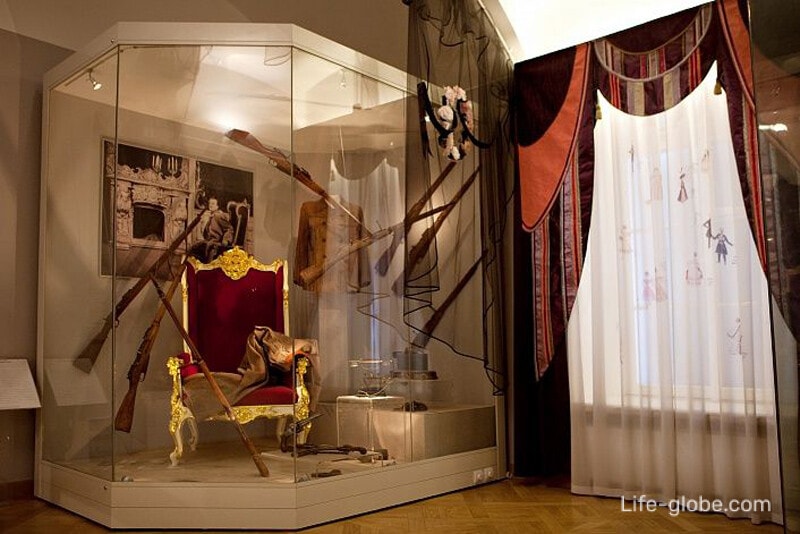
The premises of the museum "Theater Travel", like the space of the theater itself, is divided into a stage and an auditorium.
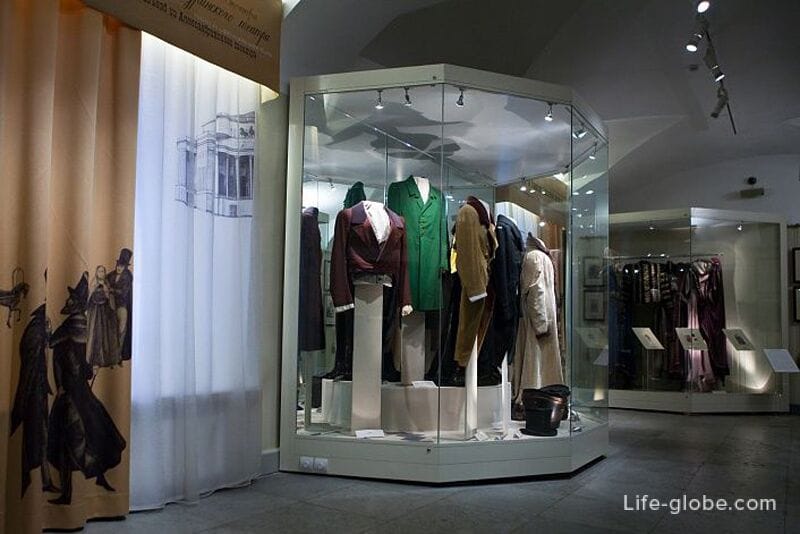
Turgenev Hall is dedicated to the plays of I. S. Turegenv, staged at the Alexandrinsky Theater.
In the showcases of the hall there are costumes from Turgenev's productions, as well as objects that characterize the era in which Turgenev's heroes lived and acted.
An important place in the exhibition is occupied by a series of sketches by V. V. Dmitriev for the legendary Turgenev play-the production of the novel "The Noble Nest", which was carried out by A. A. Musil in 1941.

The museum in the Alexandrinsky Theater can be visited by prior request.
There are also guided tours in the theater. Excursions are held in the free time from performances and rehearsals.
All the necessary information about the theater, productions, museum and excursions, we recommend that you check on the official website of the Alexandrinsky Theater.
Website of the Alexandrinsky Theater: alexandrinsky.
Address of the Alexandrinsky Theater: 6 Ostrovsky Square.
Nearest metro stations: "Gostiny Dvor" and "Nevsky Prospekt".
All accommodation facilities in St. Petersburg, including in the city center and more remote from it, can be viewed and booked here